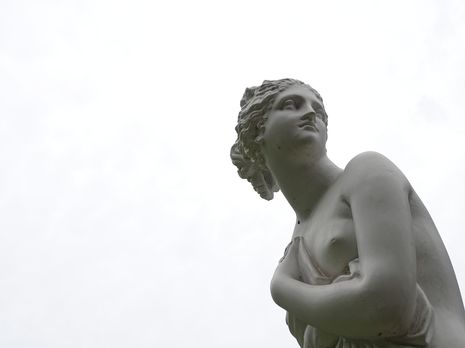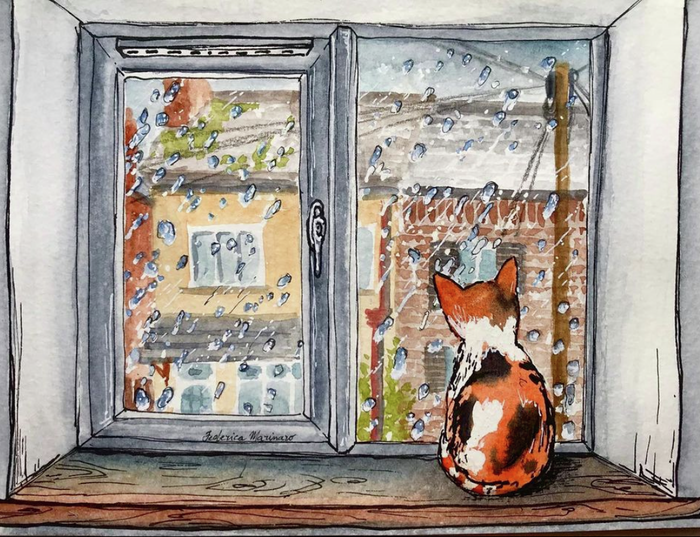Mutual Muses: Cunningham, Cage, and Queer Romance
Stanley Lawson explores the shifting dynamic of the muse in the relationship between John Cage and Merce Cunningham for Varsity’s Muse series

‘I do the cooking and Merce washes the dishes.’ So said the celebrated composer John Cage of his relationship with his equally celebrated life partner, the choreographer Merce Cunningham, when he was asked about their relationship in the late 1980s. They had been together for more than 30 years at that point, but the answer still came as a surprise to many who heard Cage’s answer.
The pair were very private about their personal relationship, especially in the early years when Cage was married to Xenia Kashevaroff. Even after Cage and Kashevaroff divorced, Cage and Cunningham were private people who did not advertise their relationship; homophobia was still rife in artistic circles in New York, so much so that Cage is said to have avoided some of the other major names in the New York art scene, like Robert Motherwell and Jackson Pollock, because of their prejudice. Instead, Cage and Cunningham gravitated towards a different circle of contemporaries, comprised mostly of gay men like Jasper Johns and Robert Rauschenberg. Though they both drew inspiration from others (Cage studied under Schoenberg, and Cunningham with Martha Graham), the greatest influence in each man’s art was the other. Both men are still highly regarded in the artistic world as innovators and pioneers of genre.
“They took creative and personal risks together and supported each other in their own individual projects.”
Each artist fed off the creativity of the other. They often collaborated as equals: there exist many Merce Cunningham choreographies to Cage’s pieces, and Cage wrote pieces inspired by Cunningham’s choreography. This was not just a collaboration in later life when they had both found success – the two men worked together in the 1940s when Cunningham was struggling to establish himself as a creative force in dance in his own right, and Cage was just beginning to break through as a composer. They took creative and personal risks together and supported each other in their own individual projects. Though Merce Cunningham’s letters to Cage appear to be lost, there is a wealth of letters from Cage to Cunningham, published in the book Love, Icebox. They involve Cage’s struggles with his ostensible muse Euterpe (the ancient Greek muse of music and lyric poetry) set alongside the inspiration Cunningham’s ‘spirit’ offers him. Cage’s unproductive grappling with a traditional muse, when compared with the creative force of Cunningham’s ‘spirit’ (which Cage sees as inextricably linked with his), suggests that Merce Cunningham, not some abstract ideal of music, was Cage’s greatest muse.
Traditionally, the heterosexual romantic partner as a muse is a dynamic fraught with questionable elements; the male creative ego feeds off a woman who is fetishized and deprived of any artistic agency of her own. This pattern is repeated in countless muse relationships throughout the history of the arts, which suggests the subjugation of female creativity by society at large. However, relationships with queer muses are often different from the traditionally imagined muse relationship. By definition queer relationships exist in opposition to straight society, and therefore the queer muse disrupts the pattern to some extent – but how much? It in its most healthy form, the relationship is more akin to a creative and romantic partnership. Cage and Cunningham participated in a relationship that pushed the boundaries of what a romantic and sexual partnership could be, and so consequently pushed the boundaries of what it meant to be both creatives within that partnership.
Of course, these relationships have and do face numerous impediments – not least from a queer creatives’ own internalised homophobia, which inhibits finding happiness and creative vitality in a romantic relationship. Neither are these relationships necessary for queer artists’ creativity. Agnes Martin might be said to be a combination of both these factors – a famously solitary artist who was never publicly out, Martin seemed not to require a long-term monogamous relationship to have powerful creativity which was centred on a deep love for the world and for life.
For couples like Cage and Cunningham however, it facilitated their creativity, helping them live out their questioning of accepted truths. Their relationship suggests that a romantic and sexual entanglement between two creatives who regard each other as equals can be a healthy and productive creative partnership. Queer muses especially, it can be argued, are capable of re-shaping the dynamic into a much more symbiotic one, each partner feeding off the other’s creative energy. As the importance of the muse in art diminishes, perhaps it can be replaced by a relationship exemplified by John and Merce: a respectful collaboration by creative and romantic equals.
 News / Eight Cambridge researchers awarded €17m in ERC research grants27 December 2025
News / Eight Cambridge researchers awarded €17m in ERC research grants27 December 2025 News / Clare Hall spent over £500k opposing busway 24 December 2025
News / Clare Hall spent over £500k opposing busway 24 December 2025 Comment / League tables do more harm than good26 December 2025
Comment / League tables do more harm than good26 December 2025 Comment / The ‘class’ of Cambridge24 December 2025
Comment / The ‘class’ of Cambridge24 December 2025 News / Caius mourns its tree-mendous loss23 December 2025
News / Caius mourns its tree-mendous loss23 December 2025










